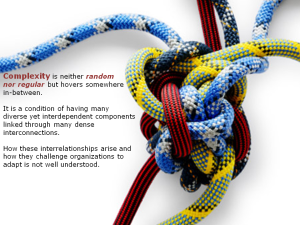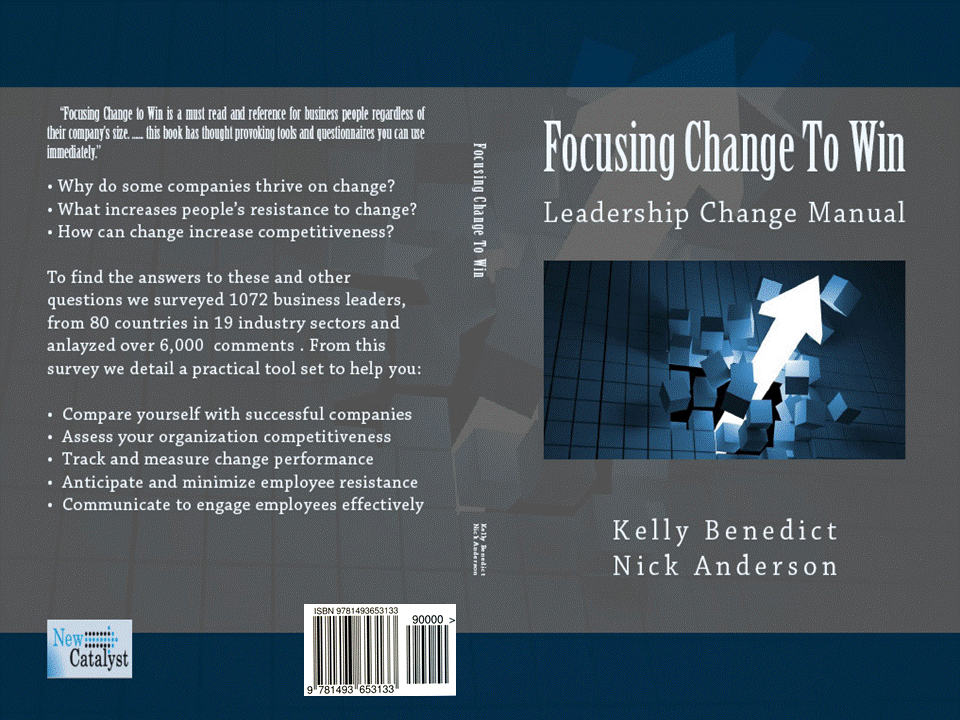Listen to the Radio Program – 15mins
It’s time we had a debate about how we develop rewarding working relationships today. (Rewarding not just productive). It is the competitive core – energizing people and harnessing technologies better than anyone else.
The ultimate standard for such rewarding relationships is a leader’s ability to sustain superior results over an extended period. The debate should focus three
questions:
- What does it mean to lead?
- What does it mean to follow?
- When do you choose one from another?
Why is this debate needed as we climb away from recession?
People have lost trust. Many business leaders, too many unfortunately, are seen as self-serving and subservient to shareholders.
What happened? “Org Chart Thinking” increasingly doesn’t work. Knowledge workers respond to learning not “command & control”. Plus, young people don’t want to wait in line to lead. Most important, people are searching for genuine satisfaction and meaning. For example, “restoring people to full life and health.” Medtronic.
You need plasticity to deal with complexity
Here’s three aspects from Bill George:
Aligning: Sustaining superior performance relies on aligning people with their company’s essence by distributing and empowering leaders at all levels. This is the most difficult task. Aligned employees who commit to that essence want to be part of something greater. For example: Johnson & Johnson’s Credo is a classic that guides everyone’s actions.
Empowering: Traditional leaders delegate limited amounts of power to keep control. We don’t live in that environment anymore. In contrast, leaders need to empower all levels while ensuring commitments are met.
Just because people don’t have direct reports doesn’t mean they shouldn’t lead. We need empowered leaders who set standards for other employees. For example:
“I make heart valves that save people’s life. I do my quality control because if one valve I make fails, someone will die…and I couldn’t live with causing someone’s death”.
Collaborating: Businesses today are too complex to foster a culture of individuality. Achieving lasting solutions needs collaboration that spans organizations, customers, suppliers, and even competitors. Leaders must foster collaborative spirit. For example: CEO Sam Palmisano transformed IBM’s bureaucracy into an “integrated global network,” by shifting to “leading by values” and breaking up silos that prevented collaboration.
Organizations filled with aligned employees focused on serving customers will outperform traditional competitors every time. Top-down leaders may make short-term results, but only the really authentic leaders can galvanize sustained long-term performance.
(Adapted from Bill George’s perspective of Aligning, Empowering and Collaborating. Bill is Professor of Management, Harvard Business School and former CEO of Medtronic)
To what extent are leaders ready for coping and thriving in accelerating change?
Complexity is not going away – its exploding. What we mean by leadership and leading needs to be redefined.

Worryingly surveys show, for example:
- Only 40% of senior executives rated themselves as “very effective” manage complexity – What happened to the other 60%!
- Less than half believed their enterprises are ready for highly volatility and increasing complex environments.
So, I want to look at why leaders should focus on the essence of their organizations. The Essence is an amalgam of mission, vision, values, intent and ethics. These components are the focus of aligning and realigning people, rather than delivering the corporate stone tablets down from Mount Sinai (or wherever the senior management strategic planning retreat was held).
“When expectations are articulated but ignored, an important part of the company’s shared purpose is shut away. By contrast, when expectations are made a central part of the company’s shared purpose, and put out in full view, they become like a beacon: a guiding light as to how to move toward a common goal. It becomes easier to speak honestly, or to reveal information, when people know that this behavior is okay” (based on Peter Senge’s Fifth Discipline Fieldbook)
Sustaining an organization’s essence is a dynamic process that require everyone’s engagement to define, yes, but crucially, reaffirm, refine and redefine (when needed) under changing situations. And don’t let that word “everyone” slip you by this is an organizationally deep process.
It’s only by Leaders “inter-reacting” that they can develop people’s shared clarity about the organization’s essence – “what we stand for!” From shared clarity comes confidence, from confidence comes cohesion and from cohesion comes the freedom to decide and act. That’s how organizations will stay on track today. Many people making many decisions true to their organization’s essence.
I have heard of interacting but not “inter-reacting” Why is it an important distinction in terms of leading in complexity?
It takes raises attention above the bland to a richer form of communication – “inter-reacting” Its communication which is neither top-down or bottom-up.
Think of each person as a neuron in their “Organization’s Brain” and the lines of expectations with others as synaptic connections. One way expectations are weak synaptic connections until they are agreed and committed to by another neuron. You need an expectation alignment process (like AlEx™) that facilitates and measures the creation of aligned expectations so the “Organization Brain” grows and learns to handle complex change. It becomes effectively self-diagnosing, exposing wasted energy (on unnecessary tasks) or lack of resources (materials, knowledge or support).
You need plasticity to deal with complexity
So, as each neuron fires its sets in train a whole series of inter-connections and reactions. There is continual feedback and reaction that builds plasticity.
Let’s bring in technology now as part of leading in complexity. What are the likely dangers of not rooting technology in a company’s essence and strategy?
It brings me back to those three questions and the challenge ahead. As Charlene Li put it in her book Open Leadership
“…let’s face it information leakage is everywhere, your company missteps spreading over all the internet to all your customers, business partners and employees….an even if you don’t want their opinions they will be out there.”
“The question isn’t whether you will be transparent, authentic and real but, how much will you let go and be open in the face of new technologies. Transparency, authenticity and …being real are the by-products of being open”
This means that shared clarity and therefor aligning people will be ever more difficult to set up and sustain, especially if people don’t know what their organization stands for.
This problem magnifies when there is no coherent place for technology in your firm’s strategy. Technology is like Maslow’s Hammer, he said,
“It is tempting, if the only tool you have is a hammer, to treat everything as if it were a nail.”
Technology increases the illusion of greater control which can feed leader’s “Control Addiction”. More measurement equals more control. But measuring what is easy to measure can have the very opposite effect. The problem is that most of what is easy to measure has already happened. What is difficult is forecasting what is likely to happen. We can’t spend more time looking through the “rear view mirror” when we have a winding road ahead of us. Technology’s cheapness and speed feeds this addiction by access to evermore data and information at the cost of acquiring knowledge and wisdom. The first two are techno-centric the last two are people-centric. So, it detracts from what leadership is:
“Leadership is a relationship between those who aspire to lead and those who choose to follow”
(The Leadership Challenge by Kouzes & Posner)
This relationship becomes critical as organizational structures flatten fueled by more knowledge working. It needs leadership which remains true to the organization’s essence while flexing to changing situations. It’s not about leaders taking more control but “loosening the reins”. The more leaders let go, then reciprocal relationships and the power of self-control can grow. We are not short of examples of moving toward self-management. For example, Gore-Tex, Whole Foods, Google etc.
“having the confidence & humility to give up the need to be in control while inspiring commitment from people to accomplish goals” (Charlene Li – Open Leadership)
Today, a paradigm shift is underway fueled by social technology and rapid change. .
Why do you think executives are having difficulty finding and developing leaders that can thrive?
Doing more with less, multi-tasking and growing doubt that we may be doing the wrong things are not good proving grounds for the leaders we need. Decision-making, expectations and technology are compressed. Under such compression, we lose the ability to stand back and assimilate.
Consequently, entrenched expediency leads us into solving one problem so quickly that we find we have now created five more problems. We are so busy trying to solve problems there’s no time for “Where the hell are we going?”
These conditions are not good to selecting or developing leaders who can work well under fluid and complex conditions
What’s happening to leaders and followers relationships in such turbulence?
Imagine the impact on a fear-based command and control culture. Subordinate leaders are just “waiting for the other shoe to drop” and the blame game to start:

The Blame Game
Everybody was sure Somebody would do it. Anybody could have done it, but Nobody did it. Somebody got angry about that because it was Everybody’s job. Everybody thought Anybody could do it, but Nobody realized that Everybody wouldn’t do it. It ended that Everybody blamed Somebody.
Reinforced, of course, when the guilty are promoted and the innocent hung.
OK. I get the need for change but let’s get practical. If I am a leader today, what can I do about leading in complexity?
Ask yourself:
- How much of my needs to control are bound up with my own insecurities and ego? And
- How much control do I really need to produce the right outcomes?
- How well do I really engage those I lead? (If you think this is the same as participation, you are wrong!)
- How aligned are my people with the Organization’s Essence and where it’s headed?
Your answers gauge just how reciprocal your relationships really are, and the extent of shared clarity about your organization’s essence.
The key is “inter-reaction” when teams who are closest to the “coal face” can openly discuss success and failure. The purpose is to take lessons learned and use them to repeat success and avoid failure. Such outcomes are the foundation of “inter-reaction” that ultimately creates rewarding relationships.
Benefits of Inter-reaction
- Understanding more clearly original intent, what thought processes drove decisions, what outcomes resulted, their real and likely consequences. So, as much attention is devoted to the “Why” as the “What”.
- Developing better solutions because of understanding the reasoning used. So, future mistakes will decrease.
- Reporting outcomes of such reviews to make recommendations that increase others learning. So, avoiding mistakes and capitalizing on successes.
- Embedding regular open communication and knowledge-sharing nurtures strengths and remedies shortcomings that improve morale,
- Building distributed leadership and growing the next leader generation
Above all, inter-reaction creates the synergies needed to develop best-of breed customer value and most of all great people. Successful inter-reaction ensures the team produces greater impact than individuals could do on their own.
Can you give readers something they could use to start improving inter-reaction in their inter-reaction?
How’s you OODA Loop?
During the Korean War, Col. John Boyd, USAF observed that the North Koreans had better jet fighters. But, what he did notice was that US pilots had superior skills. He concluded that pilots were too focused on overcoming their technical inferiority rather using their superior combat skills. So, he came up with the idea:
“What if we can make faster decisions than the enemy? After all, we already have the ability to execute better than they do”
He came up with a fast cycling decision-making process:
- Observe
- Orient
- Decide
- Act……Rapidly
He concluded decision-making is the result of rational behavior in which problems are a cycle of Observation, Orientation (situational awareness), Decision and Action. This loop (OODA Loop) enabled US fighter pilots to succeed in combat because they increased their decision-making speed which meant they outmaneuvered and confused opposing pilots. It is now used by the U.S. Marines and other organizations.
Such shared cycles help people stand back from their emotions, objectify problems and make people’s thought processes transparent. This is crucial to distributing leadership. Without this transparency leaders can’t see how to coach effectively.
This seems deceptively simple and I am sure it is not, knowing you…..
All these processes like AAR, SOAP, PACO etc. only work if there is shared clarity and alignment on the essence of what the organization stands for and that selected tools are embedded into the very fabric of rewarding relationships
What’s your tip of the blog
Leader’s greatest impact is when they motivate followers to action by appealing to their shared sense of essence. What is important and worth doing well.
“(It) occurs when people engage in such a way that leaders and followers raise one another to higher levels of motivation and morality. Their purposes, which might have started out as separate but related become fused.”
A point of reflection:
- How much do you focus on improving your alignment with your people not just on tasks but on the essence of what you and your organization stand for?
- We have all spent thousands of hours on honing our technical and professional skills but, how much on our leadership skills?
Listen to the Radio Show
Need Help in Getting Your People on the Same Page?
Ask Nick Anderson
Focusing Change To Win’s Co-Author
To Contact Us
[contact-form subject=”Feedback from pdsgroup.wordpress.com” to=”nanderson@thecrispianadvantage.com”] [contact-field label=”Name” type=”name” required=”true” /] [contact-field label=”Email” type=”email” required=”true” /] [contact-field label=”Industry” type=”text” /] [contact-field label=”Feedback” type=”textarea” required=”true” /] [/contact-form]
© Copyright All Rights Reserved, The Crispian Advantage. Unauthorized use and/or duplication of this material without express and written permission from this blog’s author and/or owner is strictly prohibited. Excerpts and links may be used, provided that full and clear credit is given to Nick Anderson, The Crispian Advantage and Walk the Talk – A Blog for Agile Minds with appropriate and specific direction to the original content.





